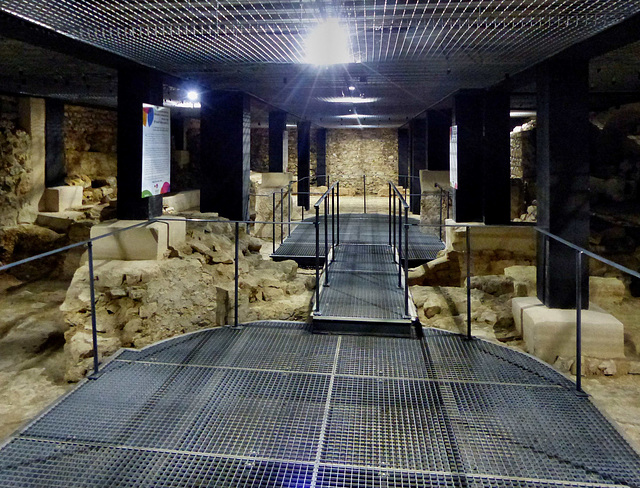Ligugé - Abbaye Saint-Martin
Ligugé - Abbaye Saint-Martin
Saint-Benoît - Abbaye Saint-Benoît de Quinçay
Saint-Benoît - Abbaye Saint-Benoît de Quinçay
Saint-Benoît - Abbaye Saint-Benoît de Quinçay
Saint-Benoît - Abbaye Saint-Benoît de Quinçay
Saint-Benoît - Abbaye Saint-Benoît de Quinçay
Saint-Benoît - Abbaye Saint-Benoît de Quinçay
Saint-Benoît - Abbaye Saint-Benoît de Quinçay
Saint-Benoît - Abbaye Saint-Benoît de Quinçay
Saint-Benoît - Abbaye Saint-Benoît de Quinçay
Saint-Benoît - Abbaye Saint-Benoît de Quinçay
Nouaillé-Maupertuis - Abbaye Saint-Junien
Nouaillé-Maupertuis - Abbaye Saint-Junien
Nouaillé-Maupertuis - Abbaye Saint-Junien
Nouaillé-Maupertuis - Abbaye Saint-Junien
Nouaillé-Maupertuis - Abbaye Saint-Junien
Nouaillé-Maupertuis - Abbaye Saint-Junien
Nouaillé-Maupertuis - Abbaye Saint-Junien
Nouaillé-Maupertuis - Abbaye Saint-Junien
Nouaillé-Maupertuis - Abbaye Saint-Junien
Nouaillé-Maupertuis - Abbaye Saint-Junien
Nouaillé-Maupertuis - Abbaye Saint-Junien
Ligugé - Abbaye Saint-Martin
Ligugé - Abbaye Saint-Martin
Ligugé - Abbaye Saint-Martin
Ligugé - Abbaye Saint-Martin
Coulombiers - Auberge le Centre - Poitou
Coulombiers - Auberge le Centre - Poitou
Coulombiers - Auberge le Centre - Poitou
Nuaillé-sur-Boutonne - Notre-Dame
Nuaillé-sur-Boutonne - Notre-Dame
Nuaillé-sur-Boutonne - Notre-Dame
Nuaillé-sur-Boutonne - Notre-Dame
Nuaillé-sur-Boutonne - Notre-Dame
Nuaillé-sur-Boutonne - Notre-Dame
Nuaillé-sur-Boutonne - Notre-Dame
Nuaillé-sur-Boutonne - Notre-Dame
Nuaillé-sur-Boutonne - Notre-Dame
Nuaillé-sur-Boutonne - Notre-Dame
Aulnay - Saint-Pierre
Aulnay - Saint-Pierre
Aulnay - Saint-Pierre
Écoyeux - Saint-Vivien
Chaniers - Saint-Pierre
Location
See also...
Keywords
Authorizations, license
-
Visible by: Everyone -
All rights reserved
-
173 visits
Ligugé - Abbaye Saint-Martin


The monastery was founded in 361 by Saint Martin of Tours, so this was the first monastery in the West. Martin built a cell in an abandoned Roman settlement, so he could be near his teacher Hilarius of Poitiers, who was Bishop of Poitiers from 350 to 367. What started as a hermitage was soon a convent of about 60 men whom Martin served as an abbot up to 370.
Excavations have confirmed the age, as remains from the 4th century were uncovered, in which cells and a small chapel could be recognized. Merovingian sarcophagi from the 5th and 6th centuries document the continued existence of the abbey.
The invasion of the Saracens, the wars of the early Carolingians, and lastly the Norman invasion were a series of disasters that almost destroyed the monastery. By the 11th century, it was a dependent priory attached to Maillezais Abbey.
It was revitalized in 1003 by the re-establishment of a shrine to Saint Martin, that grew in prominence as a place of pilgrimage.
In 1307 Pope Clement V was here and issued indulgences for the pilgrimage.
During the Hundred Years' War the priory got occupied by English troops in 1359 it got subsequently destroyed by the French forces.
Reconstruction began end of the 15th century. The 16th century church has been preserved. During the Wars of Religion, the priory suffered again. In 1607 Jesuits moved in, but in 1762 the order was expelled from France. In the course of the French Revolution, buildings and lands were nationalized and sold in private hands.
In the mid 19th century the Bishop of Poitiers acquired the complex and it got rebuild as a Benedictine monastery. Anticlerical legislation forced the Benedictines to leave France. They returned in 1923 and, as the former abbey church now served the parish, they built a new monastery church in 1929.
-
The archeological excavations below the former abbey church revealed nearly 2000 years of history here, as it all started with the remains of a Roman settlement.
Excavations have confirmed the age, as remains from the 4th century were uncovered, in which cells and a small chapel could be recognized. Merovingian sarcophagi from the 5th and 6th centuries document the continued existence of the abbey.
The invasion of the Saracens, the wars of the early Carolingians, and lastly the Norman invasion were a series of disasters that almost destroyed the monastery. By the 11th century, it was a dependent priory attached to Maillezais Abbey.
It was revitalized in 1003 by the re-establishment of a shrine to Saint Martin, that grew in prominence as a place of pilgrimage.
In 1307 Pope Clement V was here and issued indulgences for the pilgrimage.
During the Hundred Years' War the priory got occupied by English troops in 1359 it got subsequently destroyed by the French forces.
Reconstruction began end of the 15th century. The 16th century church has been preserved. During the Wars of Religion, the priory suffered again. In 1607 Jesuits moved in, but in 1762 the order was expelled from France. In the course of the French Revolution, buildings and lands were nationalized and sold in private hands.
In the mid 19th century the Bishop of Poitiers acquired the complex and it got rebuild as a Benedictine monastery. Anticlerical legislation forced the Benedictines to leave France. They returned in 1923 and, as the former abbey church now served the parish, they built a new monastery church in 1929.
-
The archeological excavations below the former abbey church revealed nearly 2000 years of history here, as it all started with the remains of a Roman settlement.
Thomas Heizmann, aNNa schramm have particularly liked this photo
- Keyboard shortcuts:
Jump to top
RSS feed- Latest comments - Subscribe to the comment feeds of this photo
- ipernity © 2007-2024
- Help & Contact
|
Club news
|
About ipernity
|
History |
ipernity Club & Prices |
Guide of good conduct
Donate | Group guidelines | Privacy policy | Terms of use | Statutes | In memoria -
Facebook
Twitter

Sign-in to write a comment.